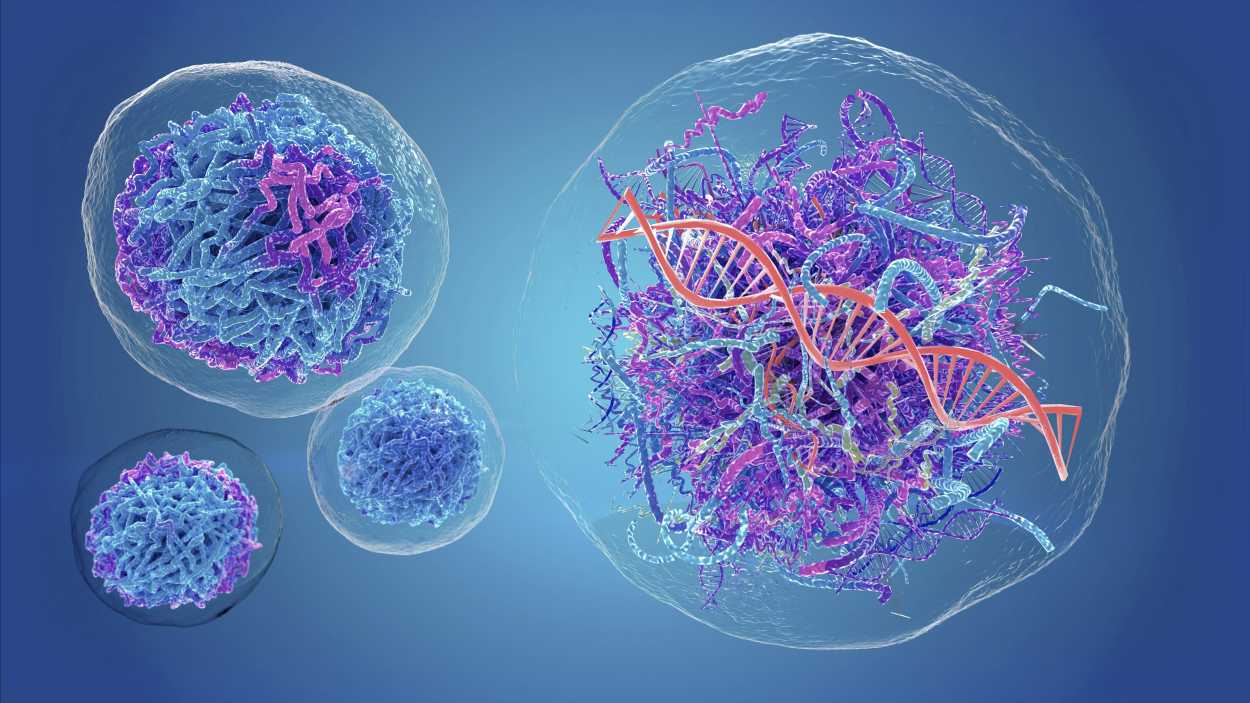Chromatin Immunoprecipitation (ChIP)
Introduction to ChIP
Chromatin, composed of RNA, DNA and proteins, is found in the nucleus of eukaryotic cells. The chromatin immunoprecipitation (ChIP) assay has been widely used to study the mechanisms of gene expression, transcription regulation, and histone modification. Besides, ChIP assays are particularly useful for the identification of transcription factors and their target genes. ChIP determines whether a certain protein-DNA interaction is present at a given location, condition, and time point. The use of an appropriate antibody is considered the most critical factor for a successful ChIP assay. A typical ChIP assay is shown in Figure 1.
Crosslinking
ChIP assays begin with covalent stabilization of protein-DNA complexes. Some protein-DNA interactions are transient, and in vivo crosslinking covalently stabilizes protein-DNA complexes. Crosslinking is normally achieved with formaldehyde but can be combined with other crosslinkers. Formaldehyde is a zero-length crosslinker, limiting its functionality. For higher order interactions, longer crosslinkers such as EGS or DSG are available to trap larger protein complexes with complex quaternary structure.
Cell Lysis
This step extracts the crosslinked protein-DNA complexes from cells and brings them into solution. At this stage, cellular components are liberated by dissolving the cell membrane with detergent-based solutions. The presence of detergents or salts will not affect the protein-DNA complex, as the covalent crosslinking will keep the complex stable throughout the ChIP procedure.
Chromatin Preparation
The extraction step yields unbound nuclear protein, full length chromatin and the crosslinked protein-DNA complexes. In order to analyze protein-binding sequences, the extracted genomic DNA must be sheared into smaller pieces. DNA fragmentation is usually achieved either mechanically by sonication or enzymatically by digestion with micrococcal nuclease.
Immunoprecipitation
ChIP-validated antibodies are used to immunoprecipitate and isolate the target from other nuclear components. This step selectively enriches for the protein-DNA complex of interest and eliminates all other unrelated cellular material. For target proteins for which qualified antibodies are unavailable, fusion proteins such as GST or HA can be expressed and then antibodies against the affinity tags can be used to immunoprecipitate the target. The antibody-protein-DNA complex is affinity-purified using an antibody-binding resin such as immobilized protein A, protein G or protein A/G. For biotinylated antibodies, immobilized streptavidin can be used.
Another consideration is the choice of primary antibody. While monoclonal antibodies (mAbs) have higher batch-to-batch consistency, they recognize a single epitope. The epitope may be masked through binding to other proteins or buried within the tertiary structure of the protein. Polyclonal antibodies (pAbs) represent a population of a number of different antibodies that recognize different epitopes. This reduces the probability that all specific epitopes are masked due to cross-linking and increases the chance of a positive result.
Crosslinking Reversal and DNA Clean-up
Enrichment of DNA bound to the protein of interest is the goal for ChIP. DNA levels can be determined by agarose gel electrophoresis or quantitative polymerase chain reaction (qPCR). The crosslinks between DNA and protein could be reversed through extensive heat incubations or through digestion of the protein component with proteinase K.
DNA Quantitation
qPCR procedures are sufficiently accurate to enable measurement of target protein-DNA levels in different experimental conditions. There is a direct correlation between the amounts of immunoprecipitated complex and bound DNA.

Modified ChIP Techniques
- ChIP-on-chip
- ChIP-Seq
- Native ChIP
- ChIP-exo
- ChIA-PET-Chromatin interaction analysis by paired-end tag sequencing
- iChIP-Indexing-first chromatin immunoprecipitation
- enChIP-engineered DNA-binding molecule-mediated chromatin immunoprecipitation
- RIP-Chip/RIP-Seq: Similar techniques used to analyze protein-RNA interactions.
Important Factors to Consider
Though the principle of the ChIP technique is simple, the actual execution of a ChIP experiment can be rather complex. Here are some important factors to consider when planning ChIP assays:
- Chromatin Quality
- Antibody Validation
- Cell Number Considerations
- Cross-Linking Issues
- Appropriate Controls
- IgG control (isotype-matched control immunoglobulin)
- Input control
- Positive control
- Negative control
Cell lysis requires considerable optimization. Since sonication is often used to break chromatin down into shorter fragments, five key variables need to be considered are cell density, sonication power/time/number of cycles/temperature.
ChIP requires recognition of the tertiary structure of a protein of interest and of an exposed epitope. ChIP-grade and ChIP-validated antibodies are recommended, but antibodies validated for immunoprecipitation (IP) or immunohistochemistry (IHC) experiments may work as well. As mentioned above, if no commercial antibody candidates exist, it is possible to tag the protein of interest with a myc, his or GST tag.
It is also important to optimize the number of cells for your particular ChIP experiment. It depends on the abundance of the target being studied. For instance, histone modifications are quite abundant and ChIP assay for these markers generally requires less starting material than probing for transcription factors, which are significantly scarcer.
Cross-linking should be performed for short durations (no more than 10 minutes). Prolonged cross-linking can reduce antigen availability and efficiency of the chromatin-shearing step. Excessive cross-linking may mask the epitope that is recognizable by your antibody, leading to a reduction in protein that can be pulled down.
Related Sections


